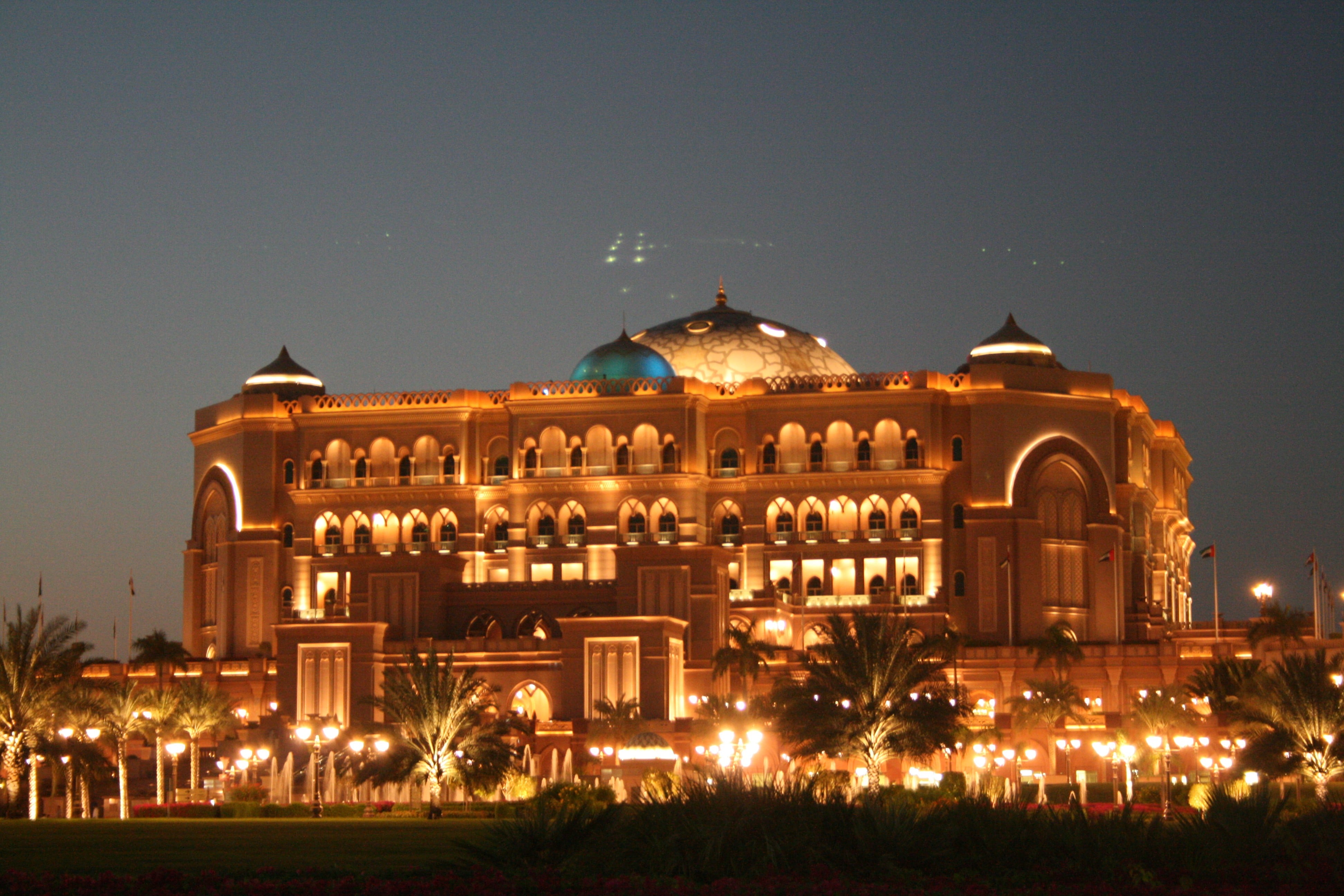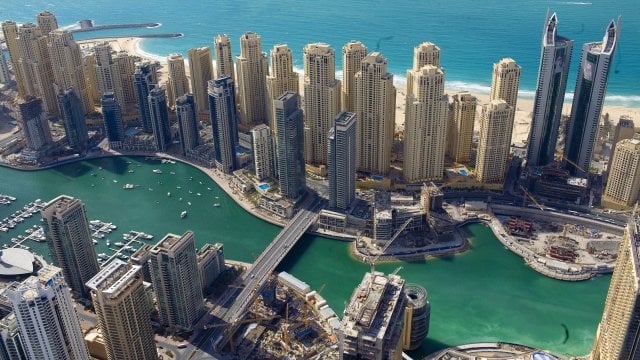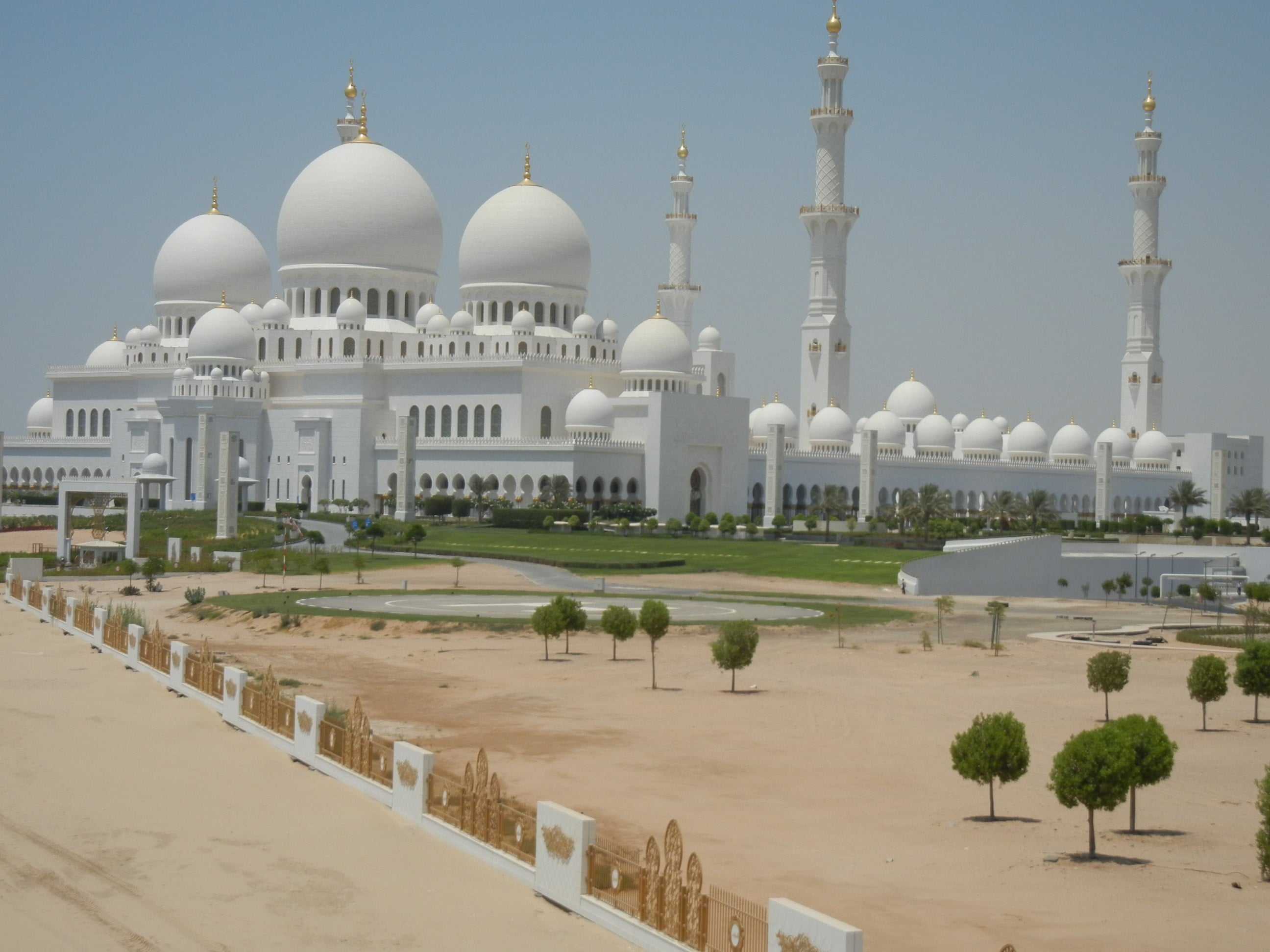Mehmood Ul Hassan Khan
United Arab Emirates is one of the hottest tourist’s attraction destinations not in the Gulf Cooperation Council (GCC), Middle East and North Africa (MENA) but also in the world. The success of its tourism and travel industry has already further diversified its macro-economy. According to official figures (2013-14) its contribution to the GDP is more than 11 percent today. It was just 1 percent 43 years ago when the Union was established. Its future estimations are healthy, productive and positive. Existence of the huge infrastructure would be a value addition in the further development of tourism and travel sector in the UAE.
It has multiplier socio-economic implications. It may further diversify its national economy. It would generate employment opportunities. It would boost small and medium enterprises. It would be useful sector for further drive of Emiratisation. It would speed-up business activities in the country. Last but not the least; it would further project the soft image of the UAE.
1. UAE total contribution to travel and tourism of GDP (2013)
According to World Travel and Tourism Council report (2014), the direct contribution of Travel & Tourism to UAE GDP in 2013 was AED56.5bn i.e. 4 percent of GDP. It would rise up to 4.7 percent i.e. AED59.1bn in 2014. It primarily reflects the economic activity generated by industries such as hotels, travel agents, airlines and other passenger transportation services (excluding commuter services). Moreover, it also includes the activities of the restaurant and leisure industries directly supported by tourists. It is predicted that the direct contribution of Travel & Tourism to GDP would grow by 3.1% pa to AED80.1bn (4 percent of GDP) by 2024.
2. Multiplier Effects
Comparative study of the World Travel and Tourism Council (2014) report says that the total contribution of Travel & Tourism to GDP including wider effects from investment, the supply chain and induced income impacts was AED117.4bn in 2013 i.e. 8.4 percent of GDP and is expected to grow by 4.5 percent to AED122.6bn i.e. 8.5 percent of GDP in 2014. Furthermore, it is forecast to rise by 3.2 percent pa to AED167.4bn by 2024 i.e. 8.5 percent of GDP.
3. UAE’s travel and tourism contribution to Employment
The report says that the Travel & Tourism generated 291,500 jobs directly in 2013 i.e. 5.3 percent of total employment. It is forecast to grow by 5.7 percent in 2014 to 308,000 i.e. 5.5 percent of total employment. It includes employment by hotels, travel agents, airlines and other passenger transportation services. It also includes the activities of the restaurant and leisure industries directly supported by tourists. By 2024, Travel & Tourism will account for 369,000 jobs directly, an increase of 1.8 percent per annum over the next ten years.
4. Multiplier Effects
According to the said report, the total contribution of Travel & Tourism to employment including wider effects from investment, the supply by 2024, Travel & Tourism is forecast to support 626,000 jobs i.e. 9.3 percent of total employment, an increase of 1.8 percent per annum over the period.
5. Visitor Exports and Investment
Visitor exports are a key component of the direct contribution of Travel & Tourism. In 2013,
The UAE generated AED80.9bn in visitor exports. In 2014, IT is expected to grow by 2.9 percent and the country is expected to attract 12,232,000 international tourist arrivals. By 2024, international tourist arrivals are forecast to total 39,937,000, generating expenditure of AED105.4bn, an increase of 2.4 percent per annum.
6. Estimates & Forecasts (AED bn)
UAE Year 2013 % of total Growth Year 2014 % of total Growth
Direct Contribution to GDP 56.5 4.0 4.7 80.1 4. 2.1
Total Contribution to GDP 117.4 8.4 4.5 167.4 8.5 3.2
Direct Contribution to Employment 201 5.3 5.7 380 5.5 5.8
Dubai Chamber of Commerce and Industry (2014)
According to the last research analysis released by the Dubai Chamber of Commerce and Industry (2014), the UAE’s travel and tourism sector is expected to create 245,000 jobs directly by 2023, registering an annual growth rate of 4.1 per cent. The capital investment in the sector is expected to rise annually by an average of 4.5 per cent to reach Dh143.4 billion in 2023. It would increase travel and tourism’s share of the UAE’s total private investments to about 23.2 per cent, up from 22.8 per cent in 2013.
World Economic Forum’s “Travel & Tourism Competitiveness Report 2013
The UAE is ranked the 28th among 139 countries and 1st in the Middle East in the World Economic Forum’s “Travel & Tourism Competitiveness Report 2013”. Dubai plays a lead role, holding a 66 per cent share of the UAE’s tourism economy, with Abu Dhabi having 16 per cent and Sharjah 10 per cent.
Hotel Industry
Data from the Dubai Statistics Office show that in 2012, the restaurants and hotels sector was the highest-growing sector in the emirate’s economy, registering a 16.9 per cent annual growth rate. It also witnessed an increasing percentage share reaching about 4.5 per cent in 2012, compared to 3.4 per cent in 2008.
Also in 2012, Dubai’s transport and communications sector had a 14 per cent share in Dubai GDP rising from 12 per cent in 2008. The sector also witnessed relatively robust annual GDP growth rate of about 7.3 per cent up from -0.9 per cent in 2008. However, part of the transport and telecommunications’ sector value added can be related to the tourism sector. Meanwhile, the total number of hotels in Dubai reached 406 hotels in June 2013, registering an annual growth rate of about four per cent compared to the same month in 2012, based on the data.
Strategy 2015
The strategic plan clearly states upholds the value of further diversification of macro-economy. It values the development of human capital, productivity, innovation, cost of doing business, quality of life, economic policy, institutional framework and laws and regulations. Strong and sustainable growth of travel &tourism industry is rated as one of the most important sector of its national economy.
Dividends of UAE World Class Infrastructure
UAE has world class infrastructure and during last 43 years, it has developed airlines, such as Emirates, Etihad Airways, Fly-Dubai, airports, a metro station, shopping malls and other major attractions for the world tourists. According Dubai Chamber (2014) the UAE’s tourism sector is expected to grow by 6.5 per cent annually between 2011 and 2021.
Dubai: an international tourism destination
Dubai has now become an international tourism destination for leisure and business travellers “through the infrastructure developed to cater to these markets. Its Vision 2020 promises to attract 20 million visitors to Dubai by 2020, from 10 million visitors in 2012, and tripling the annual contribution made by tourism to the city’s economy which was 7.9 million visitors during the same period in 2013.
UAE: A Hub for diversified meetings
The UAE has become a regional hub for diversified meetings corporate and personal meetings, incentives, seminars, expos, conferences and exhibitions, as well as VFR tourism (visiting friends and relatives). In this connection various sporting events contribute greatly to strengthening the UAE status on the world circuits as a leading international sport tourism destination: Tennis, Golf, Formula 1, as well as Marathon, Cricket, Rugby, Sailing, and more recently Sky Diving.
Dubai has already won the bid of holding World Expo 2020 which would definitely a game changer in its travel and tourism industry. Dubai has seen a number of new hotels open this year to accommodate the growing number of visitors, including The Conrad, Shaikh Zayed Road, The Oberoi Dubai, and Novotel Al Barsha, among others.
Dubai Corporation for Tourism and Commerce Marketing
Dubai Corporation for Tourism and Commerce Marketing (DTCM) expects around 35 additional hotels by 2015. Most recently, it announced a new website and a mobile application at Gitex to help achieve its goal of 20 million tourists by 2020. The application combines social media networks, search engines and holiday websites to provide a comprehensive experience and information portal for those interested in travelling to Dubai.
Abu Dhabi: A Cultural Hub
Other emirates, including Abu Dhabi, Sharjah, Ras Al Khaimah and Fujairah, are also making inroads in travel & tourism industry. Abu Dhabi has become a cultural hub. The emirate will see the opening of Louvre Abu Dhabi in Saadiyat Cultural District in 2015. The site will also be home to Zayed National Museum due to open in 2016. The emirate is also trying to position itself as a family destination, with the opening of Yas Waterworld, a waterpark. Moreover, The opening of The Galleria, the World Trade Centre Mall and Yas Mall has further enhanced its tourists attraction.
Abu Dhabi & Halal Tourism
Now, Abu Dhabi is poised to become a leading destination for Halal Tourism. It is a fast emerging concept in the tourism industry that offers a range of holiday packages adhering to Islamic beliefs and practices. Four hotels One-To-One, The Village; Ayla Hotel in Al Ain, Hala Arjaan by Rotana and Cristal Hotel in Abu Dhabi city are already listed on www.halalbooking com.
Sheikh Zayed Grand Mosque: A Unique Model of Islamic Architecture &Art
According to the official figures, the Sheikh Zayed Grand Mosque (SZGM) in Abu Dhabi received over 1.2 million worshippers and visitors during the third quarter of 2014. Of these, 873,000 were worshippers and 344,000 were visitors.
The Sheikh Zayed Grand Mosque represents a unique model of Islamic
Architecture, art and decoration and is a cultural and tourist landmark. Its Centre has prepared an integrated strategic plan to entertain the visitors, for which it organises daily cultural tours conducted by well-qualified Emirati tourist guides. The Centre also provides pioneering and distinguished services for the visitors, and follows sophisticated policies and modern standards.
As part of its role to promote awareness about rich cultural heritage and religious values, the SZGM has started a series of lectures, organised on a weekly basis, and also cooperates with the Abu Dhabi Media to broadcast these lectures on the Abu Dhabi Al Oula Satellite Channel and Abu Dhabi Al Emarat Channel.
According to Abu Dhabi Tourism and Culture Authority (TCA Abu Dhabi), it welcomed more than 3 million tourists in 2013. The TCA Abu Dhabi launched the Abu Dhabi Convention Bureau, which was established to drive its business tourism ambitions. Another milestone is the establishment of an Industry Development Committee to serve the cruise sector, which Abu Dhabi is hoping to develop.
The Northern Emirates of Fujairah and Ras Al Khaimah are projecting themselves as centres for heritage and culture, while Sharjah is becoming a religious and cultural destination.
Concluding Remarks
This year, United Nations World Tourism Organization named UAE among the top 10 fastest growing tourism hotspots in the world. The UAE’s hospitality market is set to rise to $7.6 billion by 2016, up from $4.5bn in 2011, driven by a rise in visitors to both Dubai and Abu Dhabi.
The UAE hotel industry is unparalleled in the region in terms of quality and facilities provided. Its hotels arrange art, sport and culture activities which bring global events to the country. World class facilities are also available for family and entertainment tourism, especially at the various shopping malls, beaches and heritage sites which lend diversity to tourism and attract visitors from around the world.
According to available data, about 50 million tourists have visited Dubai Shopping Festival (DSF) and they have spent approximately 88 billion dirhams since its inception about 14 years ago. Its airports witness arrivals rising at an annual rate of 10-12 percent, the number through the airport in Dubai this year touched nearly 50 million according to preliminary estimates. Arrivals at Abu Dhabi International Airport are also projected to exceed 10 million for the first time.
Emirates Airlines, Etihad Airways, Fly-Dubai and Air Arabia have significantly contributed in the travel & tourism sector and have linked the UAE to a large network of global cities, stretching from Japan in the East to the Americas in the West. Abu Dhabi has shown great interest in exhibition industry which has transformed it a unique global hub for hosting and showcasing major international events related to economy, technology and culture. The government has launched many mega tourist projects that have enhanced the role of this sector in the national economy. Projects such as Saadiyat Island, Yas Marina Formula One Circuit, the French Louvre Museum and others reflect the country’s interest in the development of this sector.
UAE’s travel & tourism sector has multiplier socio-economic effects. It has further diversified its economy. It is one of the most labor-intensive sectors and therefore provides significant job opportunities for UAE nationals. It is the link between the various facilities and services and their multiple activities, such as retail trade, restaurants, internal transport, communications and services and public utilities. Its contribution to the diversification of sources of income transcends direct contribution to indirect ones, which is no less important.
It is estimated that if the UAE tourism sector continues at this pace for the next 10 years it will raise its share in the GDP to 12.1 percent. According to a World Travel & Tourism Council report (2014) the UAE garnered 41 percent of total tourism investments in the Middle East this year which amounted to 40.5 billion dirhams ($11 billion), representing 20.9 percent of the total investments in the country during 2011.





